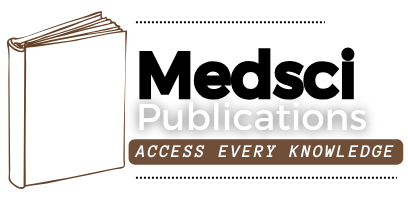Epidemiology of Craniofacial Anomalies: A Retrospective Analysis at a Tertiary Care Teaching Hospital in Southern India
DOI:
https://doi.org/10.55489/njmr.150320251122Keywords:
Craniofacial Anomalies, Cleft Lip, Cleft Palate, MicrocephalyAbstract
Craniofacial anomalies are congenital malformations that impact essential functions like breathing, feeding, and speech, influenced by genetic and environmental factors. This retrospective study analyzed 54 cases of craniofacial anomalies in neonates at a tertiary care hospital in Karnataka, India, from 2022 to 2023. Data was extracted from electronic medical records and entered and analyzed using the Statistical Package for Social Sciences (SPSS) version 27.0. Most cases were from rural areas (92.6%) and predominantly male (68.5%), with 60.4% being first-born children. The notable percentage of CFAs among male, firstborn children from rural areas underscores the need for enhanced prenatal diagnostics and early intervention in underserved communities. Further research into region-specific genetic and environmental factors may provide valuable insights for reducing the incidence of CFAs.
References
1. Shaw DW. Global strategies to reduce the health care burden of craniofacial anomalies: report of WHO meetings on international collaborative research on craniofacial anomalies. Cleft Palate Craniofac J. 2004 May;41(3):238-43. DOI: https://doi.org/10.1597/03-214.1 PMid:15151440 DOI: https://doi.org/10.1597/03-214.1
2. Fitriasari S, Trainor PA. Gene-environment interactions in the pathogenesis of common craniofacial anomalies. Curr Top Dev Biol. 2023;152:139-168. DOI: https://doi.org/10.1016/bs.ctdb.2022.10.005 PMid:36707210 DOI: https://doi.org/10.1016/bs.ctdb.2022.10.005
3. Dufresne CR. Craniofacial deformities: etiologies, distribution, and classification. Craniomaxillofacial Reconstructive and Corrective Bone Surgery. 2019;23-38. DOI: https://doi.org/10.1007/978-1-4939-1529-3_3 DOI: https://doi.org/10.1007/978-1-4939-1529-3_3
4. Mossey P, Little J. Addressing the challenges of cleft lip and palate research in India. Indian J Plast Surg. 2009;42(3):9. DOI: https://doi.org/10.4103/0970-0358.57182 PMid:19884687 PMCid:PMC2825065 DOI: https://doi.org/10.4103/0970-0358.57182
5. Bhide P, Kar A. A national estimate of the birth prevalence of congenital anomalies in India: systematic review and meta-analysis. BMC Pediatr. 2018 May 25;18(1):175. DOI: https://doi.org/10.1186/s12887-018-1149-0 PMid:29801440 PMCid:PMC5970488 DOI: https://doi.org/10.1186/s12887-018-1149-0
6. Junaid M, Slack-Smith L, Wong K, Bourke J, Baynam G, Calache H, et al. Epidemiology of Rare Craniofacial Anomalies: Retrospective Western Australian Population Data Linkage study. J Pediatr. 2022 Feb;241:162-172.e9. DOI: https://doi.org/10.1016/j.jpeds.2021.09.060 PMid:34626670 DOI: https://doi.org/10.1016/j.jpeds.2021.09.060
7. Mishra S. Pediatric craniofacial defects: The Indian scenario. 2015;11:Doc161. DOI: https://doi.org/10.3205/cpo001126.
8. Odhiambo A, Rotich EC, Chindia ML, Macigo FG, Ndavi M, Were F. Craniofacial anomalies amongst births at two hospitals in Nairobi, Kenya. Int J Oral Maxillofac Surg. 2012;41(5):596-603. DOI: https://doi.org/10.1016/j.ijom.2012.01.018 PMid:22521672 DOI: https://doi.org/10.1016/j.ijom.2012.01.009
9. Aziza A, Kandasamy R, Shazia S. Pattern of craniofacial anomalies seen in a tertiary care hospital in Saudi Arabia. Ann Saudi Med. 2011;31(5):488-493. DOI: https://doi.org/10.4103/0256-4947.84626 PMid:21911986 PMCid:PMC3183683 DOI: https://doi.org/10.4103/0256-4947.84626
10. Sawasdipanich N, Chaithat B, Rojvachiranonda N, Dangsomboon A. Epidemiological Characteristics of Children With Non-Cleft Lip/Palate Craniofacial Anomalies. J Craniofac Surg. 2022 Mar-Apr 01;33(2):610-614.DOI: https://doi.org/10.1097/SCS.0000000000008136 PMid:35385912 DOI: https://doi.org/10.1097/SCS.0000000000008136
Downloads
Published
How to Cite
Issue
Section
License
Copyright (c) 2025 Archi Rai, Lahari U, Abhipsha Tikayat Ray, Sneha Deepak Mallya, Adarsh Kudva, Saniya Shetty, Leslie Edward S Lewis

This work is licensed under a Creative Commons Attribution-ShareAlike 4.0 International License.
Author/s retain the copyright of their article, with first publication rights granted to Medsci Publications.









